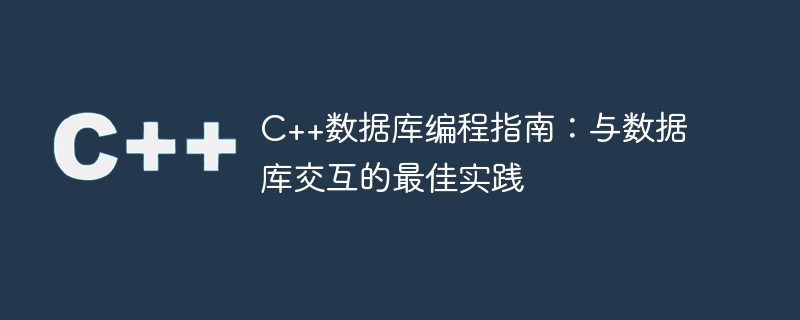

C Database Programming Guide: Best Practices for Interacting with Databases
Abstract:
Databases are a vital component of enterprise applications, and C It is a powerful and flexible programming language that can be used to develop high-performance database applications. This article will introduce some best practices for interacting with databases, including tips and techniques for connections, queries, transactions, and data security.
Introduction:
A database is a tool used to store and manage large amounts of data. It provides a convenient and efficient way to access and operate data. Interacting with databases is a core part of many enterprise applications, so it is important for C developers to understand how to interact with databases effectively.
Conclusion:
This article introduces some best practices for interacting with databases, including tips and techniques for connecting to databases, executing queries, processing result sets, using transactions, and protecting data security. For C developers, mastering these skills will enable them to develop high-performance and secure database applications. I hope this article will be helpful to readers in C database programming.
The above is the detailed content of C++ Database Programming Guide: Best Practices for Interacting with Databases. For more information, please follow other related articles on the PHP Chinese website!
 Zero-based Java self-study tutorial
Zero-based Java self-study tutorial
 What are the differences between c++ and c language
What are the differences between c++ and c language
 Recommended learning order for c++ and python
Recommended learning order for c++ and python
 Cost-effectiveness analysis of learning python and c++
Cost-effectiveness analysis of learning python and c++
 Is c language the same as c++?
Is c language the same as c++?
 Which is better to learn first, c language or c++?
Which is better to learn first, c language or c++?
 The difference and connection between c language and c++
The difference and connection between c language and c++
 C++ software Chinese change tutorial
C++ software Chinese change tutorial




